What if your truck could tow the weight of a small house without breaking a sweat? Enter the Ram 3500, a heavy-duty beast that’s not just a truck but a marvel of modern engineering. With its High Output Cummins engine, this machine redefines what it means to haul heavy loads. Whether you’re pulling a fifth-wheel trailer, a gooseneck, or a conventional load, the Ram 3500 is built to handle it all with ease. But what makes it stand out in a sea of heavy-duty trucks? Let’s find out.
Renowned automotive experts like Jay Leno, who’s known for his love of powerful vehicles, has often praised the Ram 3500 for its unmatched towing capabilities. Similarly, Edmunds has highlighted its advanced towing technologies, while Popular Mechanics has called it a “game-changer” for anyone who needs to move heavy loads. These endorsements aren’t just fluff—they’re a testament to the Ram 3500’s engineering brilliance.
Ram Heavy Duty: Built for the Biggest Loads
When it comes to heavy-duty trucks, the Ram 3500 is in a league of its own. Its design is a perfect blend of brute strength and modern technology, making it the go-to choice for anyone who needs to tow massive loads. Let’s break down what makes this truck a true workhorse.
Overview of the Ram 3500’s Design
The Ram 3500 isn’t just a truck—it’s a fortress on wheels. Its heavy-duty frame is built to withstand the toughest conditions, whether you’re hauling a 40-foot RV or a trailer full of construction equipment. The reinforced suspension and axle systems ensure that even the heaviest loads feel manageable, while the aerodynamic design helps improve fuel efficiency during long hauls. It’s like having the strength of a bodybuilder with the grace of a ballerina.
Towing Capacity Breakdown
Let’s talk numbers. The Ram 3500’s High Output Cummins engine gives it a jaw-dropping towing capacity of 37,090 lbs. That’s more than enough to tow a fully loaded semi-trailer. Its payload capacity isn’t too shabby either, maxing out at 7,680 lbs. When compared to competitors like the Ford F-350 and the Chevrolet Silverado 3500, the Ram 3500 consistently comes out on top. It’s the heavyweight champion of the towing world.
Real-World Applications
But what does this mean in real life? Imagine hauling a 40-foot RV across the country without a single hiccup. Or towing a boat to the lake for a weekend getaway. The Ram 3500 makes these tasks feel effortless. Take, for example, John, a contractor from Denver, who uses his Ram 3500 to transport heavy construction equipment daily. “It’s like the truck doesn’t even notice the weight,” he says. Stories like these are a testament to the Ram 3500’s reliability and power.
Standard vs. High Output Cummins: What's the Difference?
When it comes to the Ram 3500, the engine is the heart of the beast. The standard Cummins 6.7L inline-6 turbo diesel is no slouch, delivering 370 horsepower and 850 lb-ft of torque. But if you’re looking for the ultimate in towing power, the High Output Cummins is where it’s at. This bad boy cranks out 420 horsepower and a jaw-dropping 1,075 lb-ft of torque. That’s enough to make even the most seasoned truck enthusiast weak in the knees.
So, what’s the real difference between these two engines? It’s not just about the numbers. The High Output Cummins is designed for those who need to tow the heaviest loads with ease. Whether you’re hauling a massive RV or a fully loaded trailer, this engine ensures you’ve got the power to get the job done. Plus, with its advanced turbocharging and fuel injection systems, it’s more efficient than ever, even under heavy loads.
But let’s not forget about the standard Cummins. It’s still a powerhouse in its own right, perfect for those who don’t need the extra oomph of the High Output version. It’s also a bit more budget-friendly, making it a great option for those who want a reliable, capable truck without breaking the bank. So, which one should you choose? It all comes down to your towing needs, budget, and driving conditions. If you’re constantly hauling heavy loads, the High Output Cummins is worth every penny. But if you’re more of a weekend warrior, the standard Cummins will more than meet your needs.
Performance Comparison
When it comes to performance, the High Output Cummins is in a league of its own. It’s not just about the raw power; it’s about how that power is delivered. The High Output engine offers better acceleration and towing efficiency, making it easier to get up to speed and maintain it, even with a heavy load. And let’s not forget about fuel economy. While both engines are designed to be efficient, the High Output Cummins manages to deliver better fuel economy under heavy loads, thanks to its advanced engineering.
But what about long-term reliability? Both engines are built to last, but the High Output Cummins has a slight edge when it comes to durability. It’s designed to handle the toughest conditions, so you can count on it to keep going, no matter what you throw at it. Of course, with great power comes great responsibility. The High Output Cummins does require a bit more maintenance, but it’s a small price to pay for the performance it delivers.
Which One Should You Choose?
Choosing between the standard and High Output Cummins engines is all about understanding your needs. If you’re a professional contractor or an avid RV enthusiast who’s constantly towing heavy loads, the High Output Cummins is the way to go. It’s the ultimate in towing power, and it’s designed to handle the toughest jobs with ease. But if you’re more of a casual user who only tows occasionally, the standard Cummins is more than capable of meeting your needs. It’s a great all-around engine that offers plenty of power and reliability, without the added cost of the High Output version.
Ultimately, the choice comes down to your budget and your towing needs. Both engines are excellent options, but the High Output Cummins is the clear winner when it comes to raw power and performance. So, if you’re ready to take your towing game to the next level, the High Output Cummins is the engine for you.
Gooseneck, Fifth-Wheel, and Conventional Towing Limits
When it comes to towing, the Ram 3500 is a versatile beast. Whether you’re using a gooseneck, fifth-wheel, or conventional setup, this truck is designed to handle it all. But each towing method has its own limits and benefits, so it’s important to understand what they are and how they can work for you.
Gooseneck Towing
Gooseneck towing is a popular choice for those who need to haul heavy loads. With a maximum capacity of 35,100 lbs, the Ram 3500 is more than capable of handling even the heaviest gooseneck trailers. The gooseneck setup offers better weight distribution and stability, making it ideal for towing large RVs, boats, and construction equipment. Plus, it’s easier to maneuver than a fifth-wheel setup, making it a great option for those who need to navigate tight spaces.
When it comes to gooseneck hitches, there are plenty of options to choose from. Some of the most popular include the Curt and B&W hitches, both of which are known for their durability and ease of use. No matter which hitch you choose, make sure it’s properly installed and rated for the weight you’ll be towing.
Fifth-Wheel Towing
If you’re looking to tow the heaviest loads, fifth-wheel towing is the way to go. With a maximum capacity of 37,090 lbs, the Ram 3500 is a beast when it comes to fifth-wheel towing. This setup offers excellent stability and control, making it ideal for towing large RVs and trailers. Plus, the fifth-wheel hitch is mounted in the bed of the truck, which allows for better weight distribution and a smoother ride.
When it comes to fifth-wheel hitches, there are plenty of options to choose from. Some of the most popular include the Reese and eTrailer hitches, both of which are known for their durability and ease of use. Just like with gooseneck hitches, make sure your fifth-wheel hitch is properly installed and rated for the weight you’ll be towing.
Conventional Towing
For those who don’t need to tow the heaviest loads, conventional towing is a great option. With a maximum capacity of 20,000 lbs, the Ram 3500 is more than capable of handling smaller trailers and everyday towing needs. Conventional towing is also easier to set up and use, making it a great option for those who are new to towing or only tow occasionally.
When it comes to conventional towing, safety is key. Always make sure your trailer is properly hitched and that the weight is evenly distributed. And don’t forget to check your trailer’s lights and brakes before hitting the road. With the Ram 3500’s advanced towing features, like the Trailer Tire Pressure Monitoring System and Trailer Light Check, you can tow with confidence, knowing that your truck has your back.
Advanced Towing Tech in the Ram 3500
When it comes to towing, the Ram 3500 isn’t just about raw power—it’s also packed with cutting-edge technology designed to make your hauling experience safer, easier, and more efficient. Let’s break down the standout features that set this truck apart from the competition.
Trailer Tire Pressure Monitoring System
One of the most innovative features in the Ram 3500 is the Trailer Tire Pressure Monitoring System. This system keeps an eye on the tire pressure of your trailer in real time, alerting you if there’s a drop in pressure that could lead to a blowout. It’s like having a co-pilot who’s always watching your back—or in this case, your tires. Here’s why it’s a game-changer:
- Prevents accidents caused by underinflated tires.
- Extends the life of your trailer tires by ensuring they’re always at the optimal pressure.
- Provides peace of mind, especially on long hauls or in extreme weather conditions.
Trailer Light Check
Ever hitched up your trailer only to realize halfway down the road that one of the lights isn’t working? The Ram 3500’s Trailer Light Check feature eliminates that headache. This system automatically checks all your trailer lights—brake lights, turn signals, and running lights—before you even start driving. Here’s how it works:
- Connect your trailer to the truck.
- Activate the Trailer Light Check feature via the infotainment system.
- The system will display a visual confirmation of which lights are working and which aren’t.
It’s a small feature that can save you from big problems, like getting pulled over or causing an accident.
Integrated Trailer Brake Controller
When you’re towing a heavy load, having precise control over your trailer’s brakes is crucial. The Ram 3500’s Integrated Trailer Brake Controller lets you adjust the braking power of your trailer with just a few taps on the dashboard. This feature is especially useful when driving downhill or in stop-and-go traffic. Key benefits include:
- Customizable settings for different trailer weights and road conditions.
- Smoother, more controlled stops, reducing wear on your truck’s brakes.
- Enhanced safety by preventing trailer sway or jackknifing.
360-Degree Camera System
Maneuvering a large truck with an even larger trailer can be tricky, but the Ram 3500’s 360-Degree Camera System makes it a breeze. This system uses multiple cameras to give you a bird’s-eye view of your truck and trailer, eliminating blind spots and making hitching up or backing into tight spaces much easier. Here’s how it helps:
- Provides a clear view of obstacles around your truck and trailer.
- Makes hitching up a trailer a one-person job.
- Reduces the risk of accidents when parking or navigating narrow roads.
FAQs
What is the maximum towing capacity of the Ram 3500?
The Ram 3500 can tow up to 37,090 lbs when equipped with the High Output Cummins engine. This makes it one of the most capable heavy-duty trucks on the market.
Can the Ram 3500 tow a fifth-wheel trailer?
Absolutely! The Ram 3500 is designed to handle fifth-wheel trailers with a maximum capacity of 37,090 lbs. Its reinforced frame and advanced towing features make it an ideal choice for RV enthusiasts and professionals alike.
What is the difference between the standard and High Output Cummins engines?
The standard Cummins engine delivers 370 hp and 850 lb-ft of torque, while the High Output Cummins engine cranks it up to 420 hp and 1,075 lb-ft of torque. The High Output version is perfect for those who need extra power for heavy towing.
Does the Ram 3500 come with advanced towing features?
Yes, the Ram 3500 is packed with advanced towing features, including:
- Trailer Tire Pressure Monitoring System
- Trailer Light Check
- Integrated Trailer Brake Controller
- 360-Degree Camera System
Is the Ram 3500 suitable for everyday driving?
While the Ram 3500 is built for heavy-duty towing, it’s also surprisingly comfortable for daily use. With features like a smooth ride, a luxurious interior, and advanced tech, it’s a truck that works as hard as you do—whether you’re hauling a trailer or just running errands.
AI Solutions & Top Towing Tips
Imagine a world where your truck not only hauls your load but also predicts when it might need maintenance, optimizes your route for fuel efficiency, and even assists in autonomous towing. This isn’t science fiction—it’s the future of towing, powered by artificial intelligence (AI). The Ram 3500, already a leader in heavy-duty towing, is poised to embrace these advancements, making towing safer, smarter, and more efficient than ever before.
How AI Could Revolutionize Towing
AI-powered predictive maintenance is one of the most exciting developments in the towing industry. By analyzing data from sensors embedded in your truck and trailer, AI can predict when components like brakes, tires, or the engine might fail. This means fewer breakdowns and more time on the road. Companies like Cummins are already exploring AI-driven diagnostics to enhance the reliability of their engines.
Real-time load optimization is another game-changer. AI algorithms can analyze the weight distribution of your trailer and suggest adjustments to improve stability and fuel efficiency. This is particularly useful for heavy loads, where even small changes can make a big difference. Imagine your Ram 3500 suggesting the optimal speed and gear for your current load, ensuring you get the most out of every gallon of diesel.
Autonomous towing systems are on the horizon, too. While fully autonomous trucks are still in development, semi-autonomous features like lane-keeping assist and adaptive cruise control are already making towing safer. In the future, AI could take over the entire towing process, allowing you to relax while your Ram 3500 handles the heavy lifting. Companies like Tesla and Waymo are leading the charge in autonomous vehicle technology, and it’s only a matter of time before these innovations reach the towing industry.
Top Towing Tips
While AI is transforming towing, there are still some tried-and-true tips that every Ram 3500 owner should follow. First, always check your trailer’s weight distribution. An uneven load can make towing dangerous, so take the time to balance your cargo properly. Second, use the Ram 3500’s advanced towing features to their full potential. Systems like the Trailer Tire Pressure Monitoring and Integrated Trailer Brake Controller are there to make your life easier—don’t ignore them. Finally, regularly inspect your towing equipment for wear and tear. A little maintenance can go a long way in preventing costly repairs down the road.
Action Schedule/Roadmap
To bring these AI-driven towing solutions to life, here’s a detailed roadmap that institutions, organizations, and governments can follow:
- Day 1: Assemble a team of AI engineers, automotive experts, and data scientists to begin research and development.
- Week 1: Partner with leading AI companies like OpenAI and DeepMind to explore predictive maintenance algorithms.
- Month 1: Develop prototype sensors for real-time load optimization and test them in controlled environments.
- Month 3: Collaborate with NHTSA and other regulatory bodies to ensure safety standards are met.
- Month 6: Launch pilot programs with fleet operators to test AI-powered towing systems in real-world conditions.
- Year 1: Analyze data from pilot programs and refine AI algorithms for better performance.
- Year 1.5: Begin integration of AI systems into production models of the Ram 3500 and other heavy-duty trucks.
- Year 2: Roll out AI-powered towing features to the public, accompanied by educational campaigns to promote adoption.
The Future of Towing: Power, Precision, and Possibility
The Ram 3500 is more than just a truck—it’s a symbol of power, precision, and possibility. With its High Output Cummins engine and advanced towing technologies, it’s already the gold standard for heavy-duty towing. But as we look to the future, the integration of AI promises to take this iconic vehicle to new heights. Imagine a world where your Ram 3500 not only hauls your load but also thinks for itself, ensuring every journey is as safe and efficient as possible.
This isn’t just about technology—it’s about freedom. The freedom to explore new horizons, to take on bigger challenges, and to do it all with confidence. Whether you’re towing a fifth-wheel trailer across the country or hauling construction equipment to a job site, the Ram 3500 is your trusted partner. And with AI on the horizon, the possibilities are endless.
So, what does the future hold for towing? Will AI make our roads safer and our journeys smoother? How will these advancements change the way we think about heavy-duty trucks? These are the questions we’ll be exploring in the years to come. And as always, the Ram 3500 will be at the forefront, leading the way into a new era of towing innovation.
What are your thoughts on the future of towing? Share your ideas in the comments below, and don’t forget to subscribe to our newsletter for the latest updates on the Ram 3500 and other groundbreaking technologies. Together, we can build a brighter, smarter future—one mile at a time.
Frequently Asked Questions (FAQ)
Q1: What is the maximum towing capacity of the Ram 3500?
The Ram 3500 boasts an impressive maximum towing capacity of 37,090 lbs when equipped with the High Output Cummins diesel engine. This makes it one of the most capable heavy-duty trucks on the market.
Q2: Can the Ram 3500 tow a fifth-wheel trailer?
Absolutely! The Ram 3500 is designed to handle fifth-wheel trailers with ease. Its maximum fifth-wheel towing capacity is 37,090 lbs, making it ideal for hauling large RVs or heavy equipment.
Q3: What is the difference between the standard and High Output Cummins engines?
The standard Cummins engine delivers 370 horsepower and 850 lb-ft of torque, while the High Output version cranks it up to 420 horsepower and a whopping 1,075 lb-ft of torque. The High Output engine is perfect for those who need extra power for heavy towing.
Q4: Does the Ram 3500 come with advanced towing features?
Yes, the Ram 3500 is packed with advanced towing technologies, including:
- Trailer Tire Pressure Monitoring System: Keeps an eye on your trailer’s tire pressure in real-time.
- Trailer Light Check: Ensures all trailer lights are working properly before you hit the road.
- Integrated Trailer Brake Controller: Provides precise control over your trailer’s braking system.
Q5: Is the Ram 3500 suitable for everyday driving?
While the Ram 3500 is built for heavy-duty towing, it’s also surprisingly comfortable for daily use. With features like a smooth ride, modern interior, and advanced tech, it’s a versatile truck for both work and play.
Q6: What is the fuel economy of the Ram 3500 when towing?
Fuel economy varies depending on the load, but the Ram 3500 typically averages around 12-15 MPG when towing heavy loads. For a truck of its size and power, this is quite impressive.
Q7: Can I upgrade my Ram 3500 to the High Output Cummins engine?
No, the High Output Cummins engine is only available as a factory option. If you’re considering this upgrade, make sure to select it when purchasing your truck.
Q8: What is the warranty on the Ram 3500?
The Ram 3500 comes with a 3-year/36,000-mile basic warranty and a 5-year/100,000-mile powertrain warranty. This provides peace of mind for long-term ownership.
Q9: Does the Ram 3500 have a diesel exhaust brake?
Yes, the High Output Cummins engine includes a diesel exhaust brake, which helps improve control and safety when towing heavy loads downhill.
Q10: What is the price of the Ram 3500 with the High Output Cummins engine?
The starting price for the Ram 3500 with the High Output Cummins engine is around $60,000. However, the price can increase significantly with additional features and packages.
Q11: How does the Ram 3500 compare to competitors like the Ford F-350 and Chevrolet Silverado 3500?
The Ram 3500 stands out with its superior towing capacity, advanced towing technologies, and powerful High Output Cummins engine. While the Ford F-350 and Chevrolet Silverado 3500 are strong competitors, the Ram 3500 often edges them out in terms of raw power and towing features.
Q12: What are some real-world applications of the Ram 3500’s towing capabilities?
The Ram 3500 is perfect for a variety of heavy-duty tasks, including:
- Towing large RVs for family vacations.
- Hauling boats to the lake or ocean.
- Transporting construction equipment to job sites.
Q13: What are the benefits of gooseneck towing with the Ram 3500?
Gooseneck towing offers several advantages, including:
- Higher towing capacity (up to 35,100 lbs).
- Better stability and control for heavy loads.
- Easier maneuverability compared to conventional towing.
Q14: How does the Ram 3500’s 360-degree camera system help with towing?
The 360-degree camera system provides a bird’s-eye view of your truck and trailer, making it easier to hitch up, maneuver in tight spaces, and avoid obstacles. It’s a game-changer for safe and stress-free towing.
Q15: What are some tips for safe towing with the Ram 3500?
Here are a few essential tips:
- Always check your trailer’s weight distribution.
- Use the Ram 3500’s advanced towing features, like the Trailer Tire Pressure Monitoring System and Integrated Trailer Brake Controller.
- Regularly inspect your towing equipment for wear and tear.
Wait! There's more...check out our gripping short story that continues the journey: Luminopolis
Disclaimer: This article may contain affiliate links. If you click on these links and make a purchase, we may receive a commission at no additional cost to you. Our recommendations and reviews are always independent and objective, aiming to provide you with the best information and resources.
Get Exclusive Stories, Photos, Art & Offers - Subscribe Today!
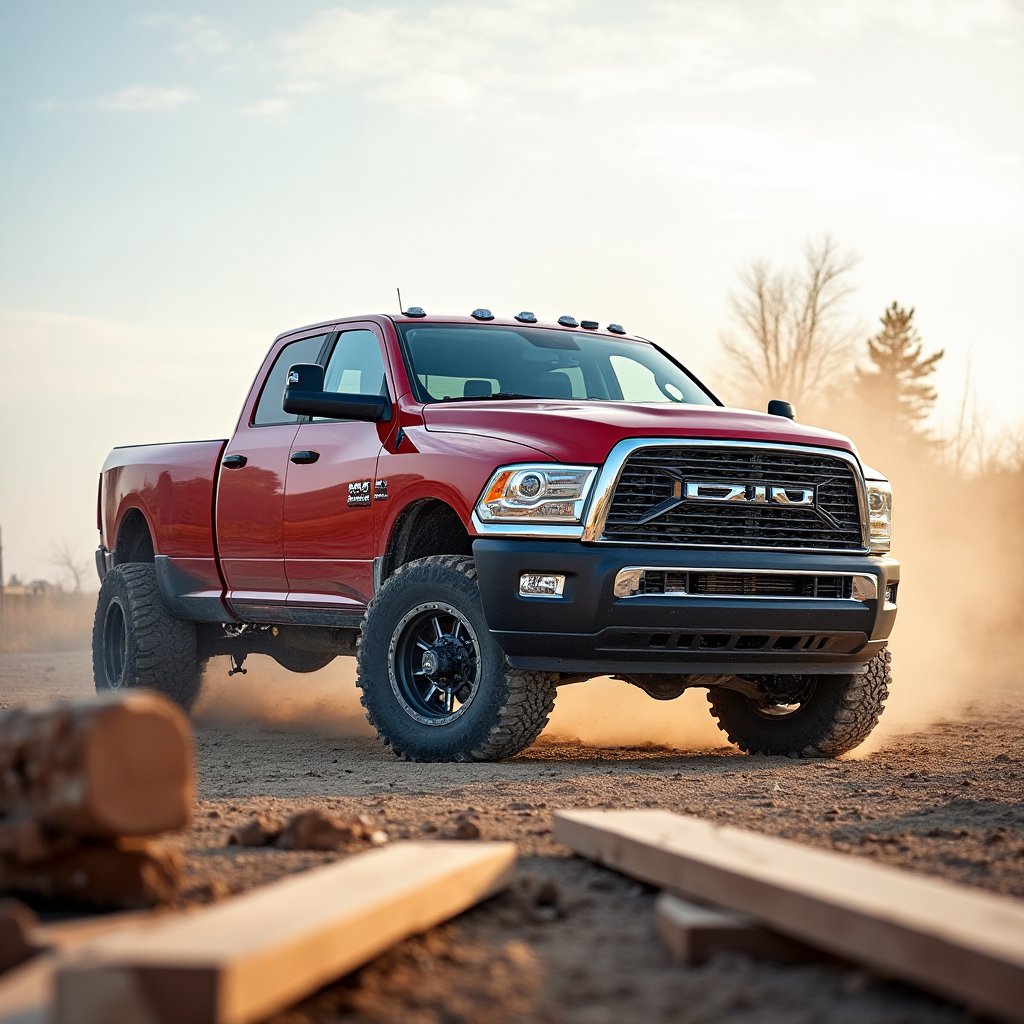

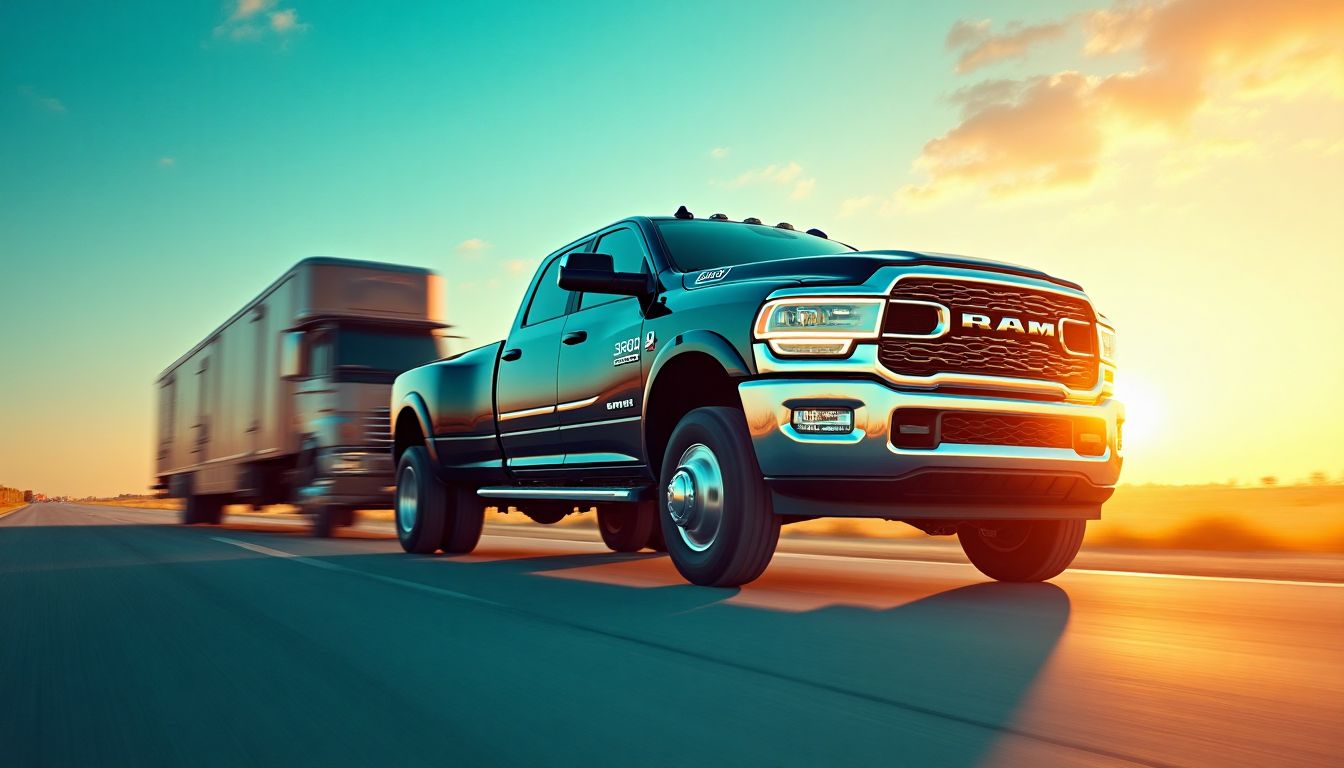

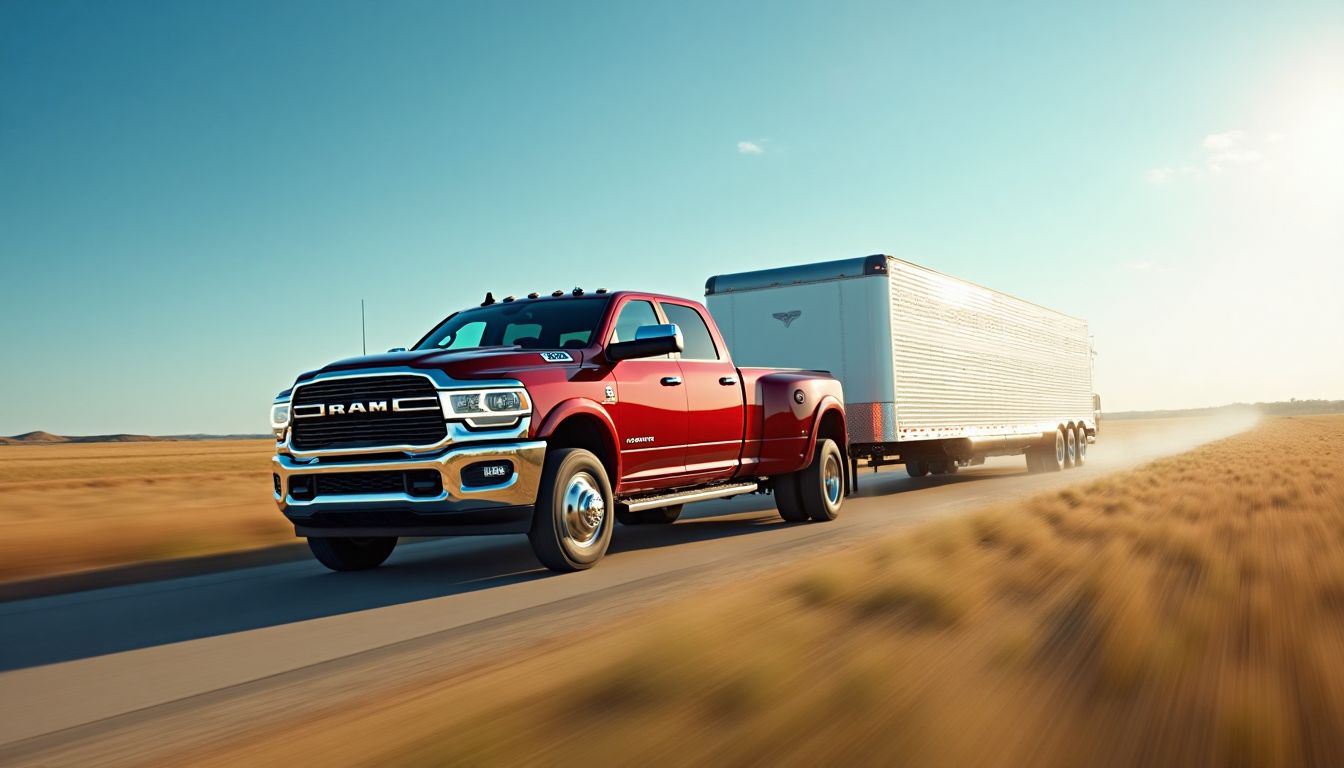






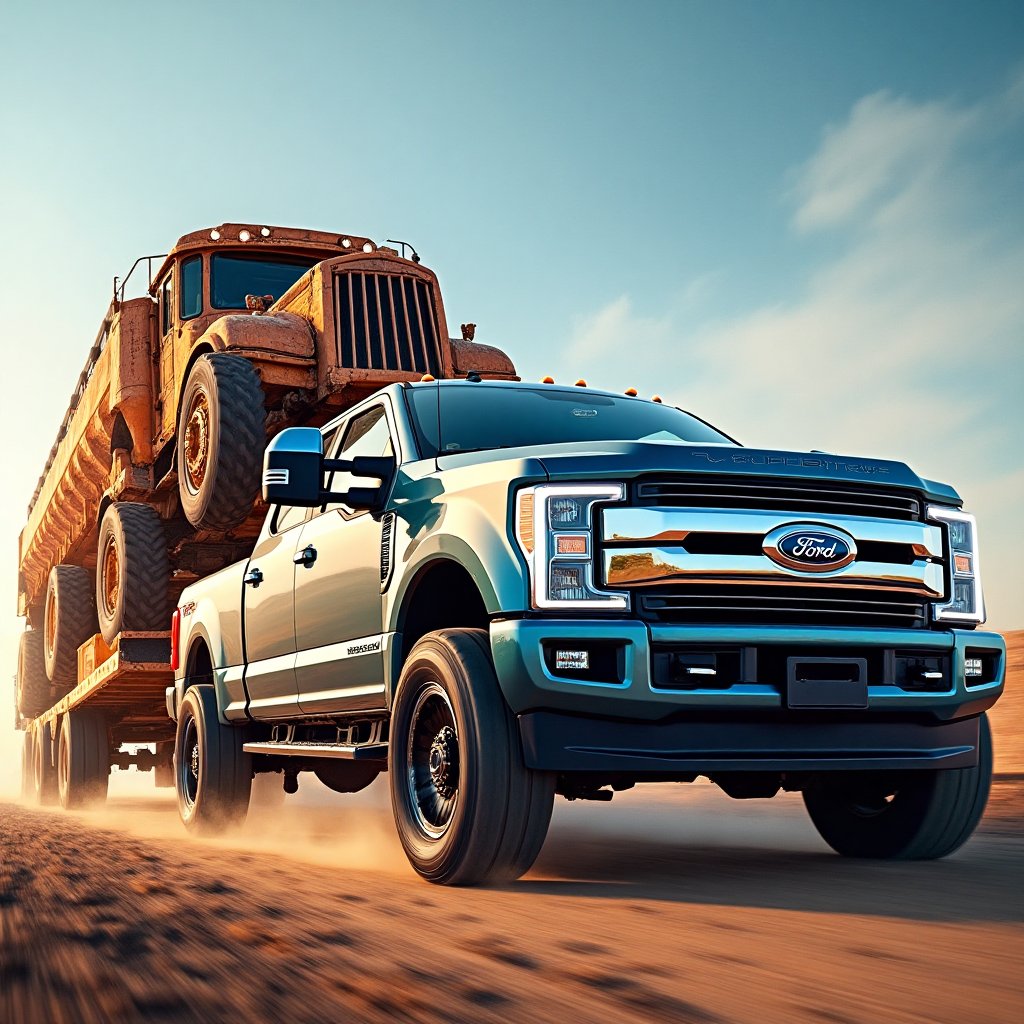
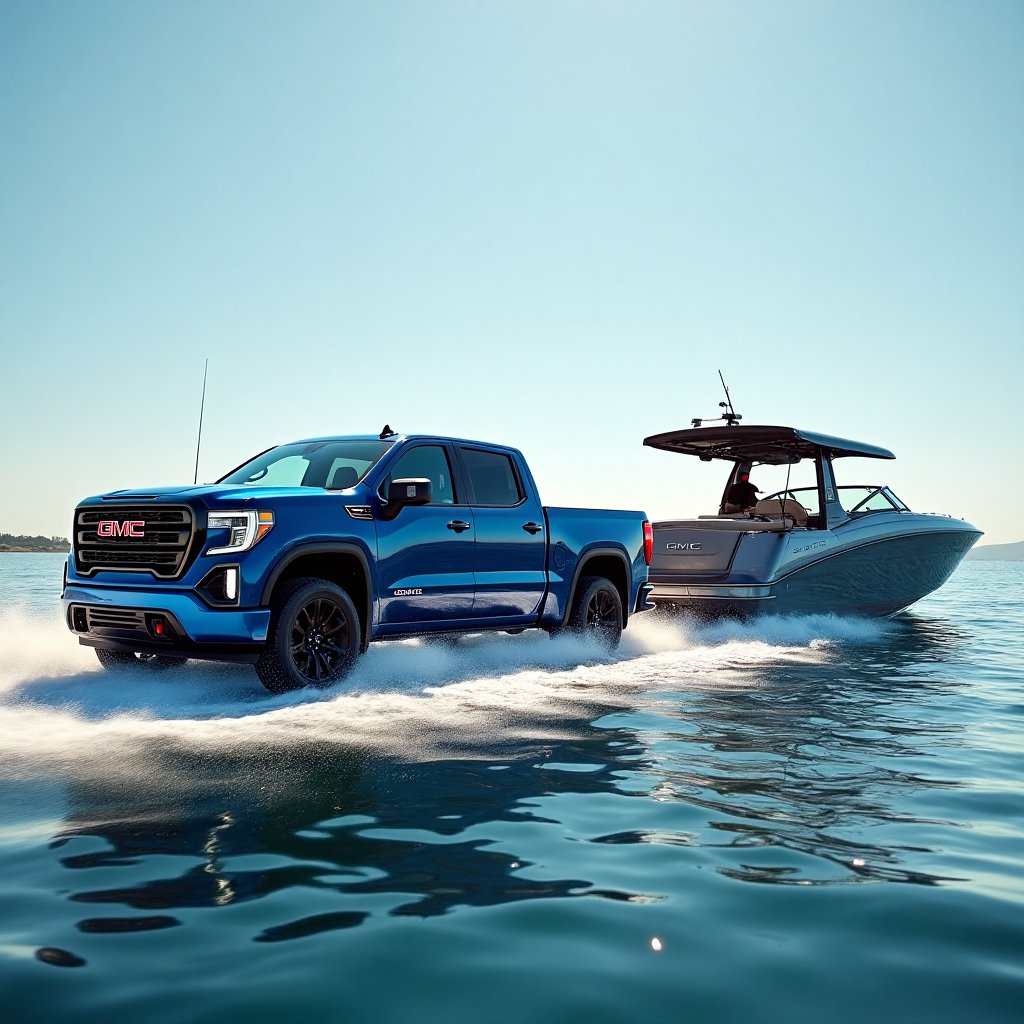
















Post Comment
You must be logged in to post a comment.